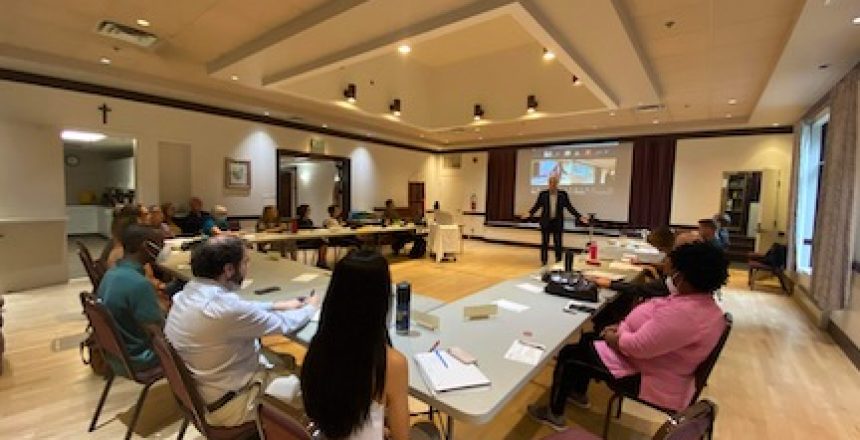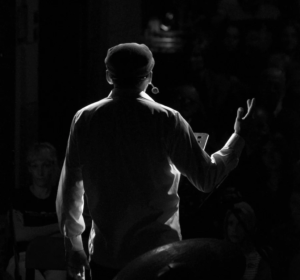In March 2020, Beth Blum published The self-help Compulsion: Searching for advice in modern literature. The Harvard Assistant Professor of English studied how readers have engaged with books as guides for becoming better people. What caught my eye was Blum’s suggestion that perhaps we are missing out on literary classics like storytelling and fiction as our self-help. Should we dismiss non-fiction self-help as insincere and accept and pursue the idea that self-help may be closer to storytelling?
Storytelling is the art of communicating narratives orally, visually or written, propelling us forward through different ideas. For ages, people have shared stories in all cultures, languages, and traditions. Even our ancestors may have used cave drawings to tell stories of unknown animals, humans, and objects.
Stories do one thing. They help us understand the world. They’re integral to a universal human experience that allows us to connect. Each story empowers us to make sense of how others feel and think. It provides a window into different ideas, opinions, and emotions—something we might not have otherwise experienced or considered.
How I came to love storytelling
I wrote a book in 2021 called Listening to Crickets: The anti-self-help book to whatever makes you happy. The book is about the non-fiction self-help industry’s good, bad, and ugly. I proposed that whatever makes you happy is what you should read, or if you want to help yourself, listen to the melody of crickets in the evening. I asked, “If we cannot decipher self-help from self-help books, and if we stopped reading self-help books, what would we read?”
Let’s answer by sharing a story
A great story builds an idea. I like to refer to building on an idea through a story as helping you see something that you can no longer unsee, something that will never be invisible again, leaving you changed because stories can leave you changed.
A story that left me changed was about a Cuban fisherman named Santiago, an old, skilled fisherman who hasn’t brought in a fish for 84 days. On the 85th day, he heads far out into the Gulf of Mexico, where he hooks a giant marlin. Unable to pull the fish into his boat, he holds onto the line for three days before killing it with a harpoon. After tying the fish to his craft, Santiago heads home with his hard-won prize. But sharks reduce the fish to bones along the way, and Santiago returns to port left–empty-handed.
Now, it’s obvious what I’m doing. I’m telling you a fictional story about the human condition through the life of an old fisherman. Santiago symbolizes the persistence, skill, endurance, and humility hallmarks of virtue and right living. Some of you reading this post are probably nodding; do you know what book this is? The Old Man and the Sea, by Ernest Hemingway, was written in 1957.
The Old man and the sea is a simple story on the surface. The story has a more profound message. It speaks to the universal truths of human existence, where pride, respect, tenacity, and dreams fuel our quest to thrive in the face of struggle. It is a story about the spirit of all of us.
Building on life’s ideas
Santiago, through Hemingway, builds on the idea that despite our losses, we will struggle, and it is always worth doing. As Hemmingway builds on the story’s idea, I understand that:
- Resilience comes in small steps.
- Others deal with struggles I do not realize.
- Courage is contagious.
- Disappointments provide opportunities.
- Dance on your feet and be ready for anything.
- A man bears pain and hardship without complaint.
For example, Hemingway writes, “He was shivering with the morning cold. But he knew he would shiver himself warm and that soon he would be rowing.”
- Men are not made for defeat.
- A man must never boast.
For example, Hemingway writes, “Manolin asks, ‘Who is the greatest manager, really, Luque or Mike Gonzalez?’”
“I think they are equal.”
“And the best fisherman is you.”
“No. I know others better.”
- A man’s legacy comes from maintaining his integrity.
This one is a favourite. Santiago ends up with the same thing when the story begins: almost nothing. His catch does not bring him money nor “success,” but it provides him with a legacy that will endure far beyond any monetary gain. He keeps his integrity in facing all challenges; he exhausts himself in a good fight. A man doesn’t quit.
- A man finds inspiration from others.
In my mind, every man is a mentor to each other. Hemingway’s story tells of man-to-man mentoring. “But I must have confidence, and I must be worthy of the great DiMaggio who does all things perfectly even with the pain of the bone spur in his heel.” For Santiago, “the great Joe DiMaggio” inspires and motivates him. He possesses traits that Santiago admires, reminding him to be successful, and put all of himself into a task.
When I must catch a big fish and watch out for sharks, all these ideas come to me.
You are the story because you’ve been transported to another world; your brain puts you there. Storytellers find a voice rooted in the person’s experience and the connection to those of others and larger stories of culture and humanity. It is the realization that we are all characters in each other’s stories and our own. It reminds us that our stories only go forward as we act in ways that also forward the stories of others. While we are in a story, we can help ourselves.
Ernest Hemingway said, “Any person’s life, told truly, is a helpful story.”







